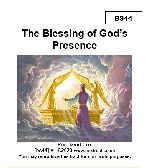In Machen Virgin Birth of Christ Machen studies the Virgin birth looking at how each of the Synoptic Gospel writers address it. He also looks at the Virgin Birth and Secular History, and references places in the rest of the NT. He also addresses alternative theories and their problems.
THE VIRGIN BIRTH OF CHRIST
 .
.
Please help us keep this website up. We work hard to be a blessing to you. Donate to us. Even a $5 or $10 donation is greatly appreciated. All donations will go to pay hosting and domain fees.
You can use your PayPal account if you have one, or you can donate using any normal debit or credit card, pay through PayPal and chose just Debit or Credit Card.
BY J. GRESHAM MACHEN, D.D., LITT.D.
sometime Professor of New Testament in Westminster Theological Seminary, Philadelphia…
In this book Machen studies the Virgin birth looking at how each of the Synoptic Gospel writers address it. He also looks at the Virgin Birth and Secular History, and references places in the rest of the NT. He also addresses alternative theories and their problems.
CONTENTS
Introduction
Chapter 1. The Virgin Birth in the Second Century
Chapter 2. The Birth Narrative an Original part of the Third Gospel
Chapter 3. Characteristics of the Lucan Narrative
Chapter 4. The Hymns of the First Chapter of Luke
Chapter 5. The Origin and Transmission Of the Lucan Narrative
Chapter 6. The Integrity of the Lucan Narrative
Chapter 7. The Narrative in Matthew
Chapter 8. The Relation Between the Narratives
Chapter 9. The Inherent Credibility of the Narratives
Chapter 10. The Birth Narratives and Secular History
Chapter 11. The Birth Narratives and the Rest of the New Testament
Chapter 12. Alternative Theories: Preliminary Considerations
Chapter 13. The Theory of Jewish Derivation
Chapter 14. The Theory of Pagan Derivation
Chapter 15. Conclusion and Consequences
http://trinitystudies.info/jesus/books/machen/main.htm [Download not found]
TO MY MOTHER
PREFACE TO THE FIRST EDITION
THIS book may be regarded as containing in substance, though not in form, the Thomas Smyth Lectures which the author had the honor of delivering at Columbia Theological Seminary in the spring of 1927. The subject is here treated with much greater fullness than was possible in the lectures as they were delivered, and use is made of certain special studies which have been published from time to time in The Princeton Theological Review—particularly “The Virgin Birth in the Second Century, The Hymns of the First Chapter of Luke,” and “The Origin of the First Two Chapters of Luke,” which appeared in 1912, and “The Integrity of the Lucan Narrative of the Annunciation,” which appeared in 1927. The author is greatly indebted to John E. Meeter, Th.M., to whose careful scrutiny of the proof and correction of references and quotations the book owes much of whatever accuracy it may have attained. Profit has been received from Mark Meeter’s suggestions at many points.
1930
J. G. M.
PREFACE TO THE SECOND EDITION
IN THIS second edition, typographical errors have been corrected, additional references to recent discussion have been inserted here and there; and a number of other slight changes have been made. Page 121 has been partly re-written. The author is grateful to his brother, Arthur W. Machen, Jr., and to others who have made helpful suggestions. It is impossible to comment here in any detail upon the way in which the book has been received; but in general it may be said that even those reviewers who disagree sharply with the author’s position have for the most part been generous in according to the book at least some value as a compendium of information. The author is encouraged by such recognition, since he believes that truth is furthered by full and open debate.
If the book presents any distinctive feature, it is to be found, perhaps, in the argument for the integrity of the Lucan narrative which is contained in Chapter VI That argument cannot, indeed, advance any particular claim to originality: even the stress which it lays upon the parallelism between the accounts of the annunciations to Zacharias and to Mary has been anticipated, as is indicated on pp. 152, 158, by other writers; and to the references there made should be added V H. Stanton, The Gospels as Historical Documents, ii, 1909, p. 226. But the somewhat comprehensive presentation of the argument may, we hope, produce a certain cumulative effect.
At any rate, whatever distinctiveness there may be or may not be in this presentation of the argument, we do not think that the argument has been successfully answered. A careful literary criticism does, we think, in an extraordinarily decisive way, show that the belief in the virgin birth is an integral part of the Palestinian narrative underlying #Lu 1:5-2:52; and this fact has an important bearing upon the ultimate historical question as to the origin of the belief.
Our argument at this point has, indeed, been subjected to an able and extended criticism by Ferd Kattenbusch, in an article entitled “Die Geburtsgeschichte Jesu als Haggada der Urchristologie (Zu J. Gr. Machen, The virgin birth of Christ),” in Theologische Studien und Kritiken, cii, 1930, pp. 454-474. The distinguished church historian, after certain bibliographical suggestions which we have found very useful in the preparation of the present edition, and after an exceedingly sympathetic and generous treatment of the book as a whole (despite disagreement with its main thesis), has here given renewed expression to essentially the same view as that which he adumbrated in 1900 in his comprehensive monograph on the Apostles’ Creed.
Two stages, he still maintains, are to be distinguished in the formation of the Lucan birth narrative. In the former stage, there was still no thought of a birth without human father, but the Spirit of God was regarded merely as connected with the very being of Jesus the Messiah in a peculiarly intimate way that could not be predicated of the Spirit’s connection with any prophet. In the later stage, which appears with clearness only in the words, “seeing I know not a man,” in #Lu 1:34, there was at least a suggestion of the virgin birth.
In reply to this article, the reader may still be referred to pp. 156-160, 317-319, below. Some parts of these pages would no doubt have to be re-written if the later rather than the earlier presentation of Dr. Kattenbusch’s hypothesis were in view. For example, what is said on p. 318 regarding the doctrine of the preexistence of Jesus does not apply to the recent article; and it should be observed also that Dr. Kattenbusch now suggests that in the formation of the idea of the virgin birth pagan stories of supernatural births, in addition to #Isa 7:14, may have had a part, though only in providing a stimulus by way of contrast and not in providing anything like genuine models for the Christian story. But, in the first place, the earlier form of the hypothesis is still interesting, both in itself and because of its effects upon subsequent criticism; and, in the second place, the main outlines of our objections to Dr. Kattenbusch’s view remain as they were before. Particularly unconvincing, we are compelled to think, is what he says (on pp. 464f.) regarding the relation between the account of the birth of John the Baptist and that of the birth of Jesus in #Lu 1:5-2:52. He thinks it significant that the relation is not represented, more clearly than it is, as a relation between a lesser wonder and a greater one. But, as a matter of fact, it is difficult to see how anything could be clearer than #Lu 1:36. According to Dr. Kattenbusch’s theory, the angel ought to have been represented as saying to Mary: “And, behold, thy kinswoman Elisabeth, she also hath conceived a son who will be filled with the Spirit from his mother’s womb; understand, therefore, that thy Son will be connected with the Spirit in an even more intimate way.” As a matter of fact, what the angel did say, according to the narrative, is: “And, behold, thy kinswoman Elisabeth, she also hath conceived a son in her old age.” Evidently the meaning is that the wonder in the case of Mary, though far greater, is analogous to the wonder in the case of Elisabeth in that it has to do with the physical fact of the conception of the child in the womb.
It is encouraging to observe that R. Bultmann (Die Geschichte der synoptischen Tradition, 2te Aufl., 1931p. 322) expresses agreement with our insistence upon the intimate connection between #Lu 1:34. (including, of course, #Lu 1:34) and #Lu 1:36; but his own hypothesis—that #Lu 1:34-37 was composed by the author of the Gospel in imitation of #Lu 1:18-20—is faced by serious special objections (which are set forth on pp. 138, 148, below) in addition to the objections that apply equally to all forms of the interpolation hypothesis.
The book has been criticized by a number of writers (for example, in The Times Literary Supplement, London, for April 10, 1930) on the ground that it weakens its case by attempting to prove too much—by attempting to establish a thoroughgoing trustworthiness for the birth narratives in Matthew and Luke, instead of admitting the presence of a “midrashic” element as does G. H. Box.
In reply to this criticism, the author desires to say how very highly he values the work of Canon Box (whose important book on the virgin birth has recently been supplemented, in a very interesting way, by two articles entitled “The Virgin Birth, A Survey of Some Recent Literature,” in Laudate, ix, 1931, pp. 77-88 147-155), and he also desires to say how sharply he distinguishes the view of this scholar, who accepts as historical the central miracle in the birth narratives and rejects details, from the views of those who accept only details and reject the central miracle. The author has taken occasion, moreover, to say (in British Weekly, for August 21, 1930), in reply to a very sympathetic review by H. R. Mackintosh (in the same journal, for July 17, 1930), that he does not adopt the apologetic principle of “all or nothing,” and that he rejoices in the large measure of agreement regarding the birth narratives that unites him with scholars like Canon Box and the late Bishop Gore, who reject many things in the Bible that he regards as true. Nevertheless, the author still believes that a thoroughgoing apologetic is the strongest apologetic in the end; and, in particular, he thinks that when the objections to the supernatural have once been overcome, there are removed with them, in a much more far-reaching way than is sometimes supposed, the objections to the birth narratives as a whole.
Finally, the author desires to say how greatly encouraged he has been by the manner in which the book has been received by Roman Catholic scholars—for example, by the learned Abbot of Downside, Dora Chapman (in The Dublin Review, xcv, 1931, pp. 150-153), to whom students of the New Testament and of patristics have long been deeply indebted. The author is not, indeed, inclined to accept the dictum of John Herman Randall and John Herman Randall, Jr., when, from the point of view of those opposed to all traditional Christianity, they say (Religion and the Modern World, 1929, p. 136): “Evangelical orthodoxy thrives on ignorance and is undermined by education; Catholic orthodoxy is based on conviction, and has an imposing educational system of its own.” He makes bold to think that the scholarly tradition of the ProtestantChurch is not altogether dead even in our day, and he looks for a glorious revival of it when the narrowness of our metallic age gives place to a new Renaissance. But if he disagrees with what these writers say about Protestantism, he agrees to the full with their high estimate of the Roman Catholic Church; and he rejoices greatly in the important contributions made by Roman Catholic scholars to the subject dealt with in the present book.
J. G. M. March, 1932.

bs44 The Blessing of God’s Presence The Blessing of God’s Presence looks at how God's special presence brings great blessings to us, and how lost people in hell are lacking this. Topics: God is Omnipresent | The Presence of the Omnipresent God and the Actual Presence of God | Hell is to not sense any of the special presence of God | There are Great Blessing in the Presence of God | God is Love | Conclusion
See the Tract: bs44 The Blessing of God’s Presence
MySwordmodules is a website dedicate to the MySword Bible Program for Androird devices. We host MySword Modules.

Old Carpenter Tools of his Trade is an explanation of why I, Pastor-Missionary David Cox, write my own materials like tracts, books, sermons, Sunday School material, etc. We produce the material that we use in our ministry and also for evangelism.
Read the short article: Old Carpenter Tools of his Trade.
